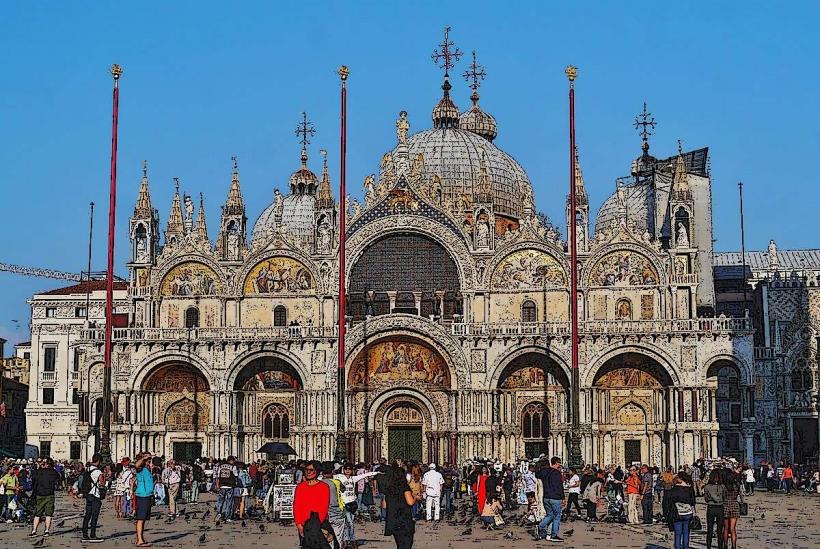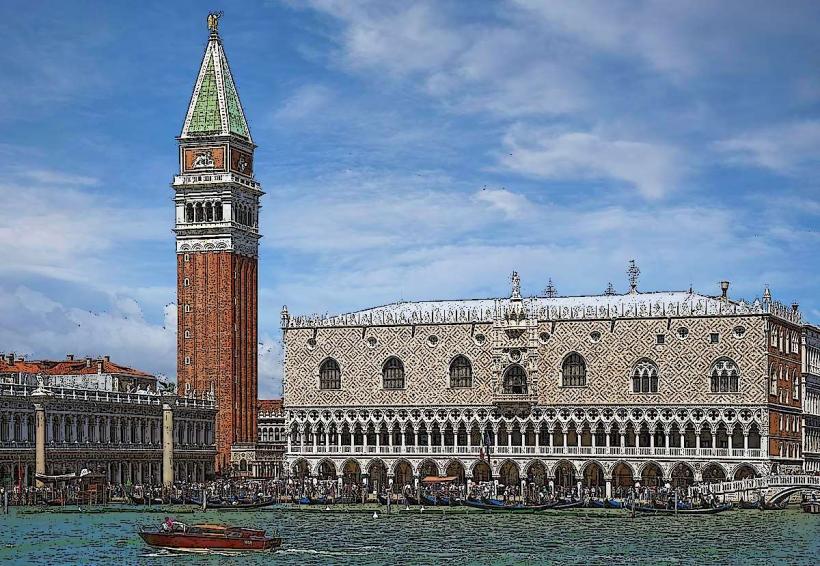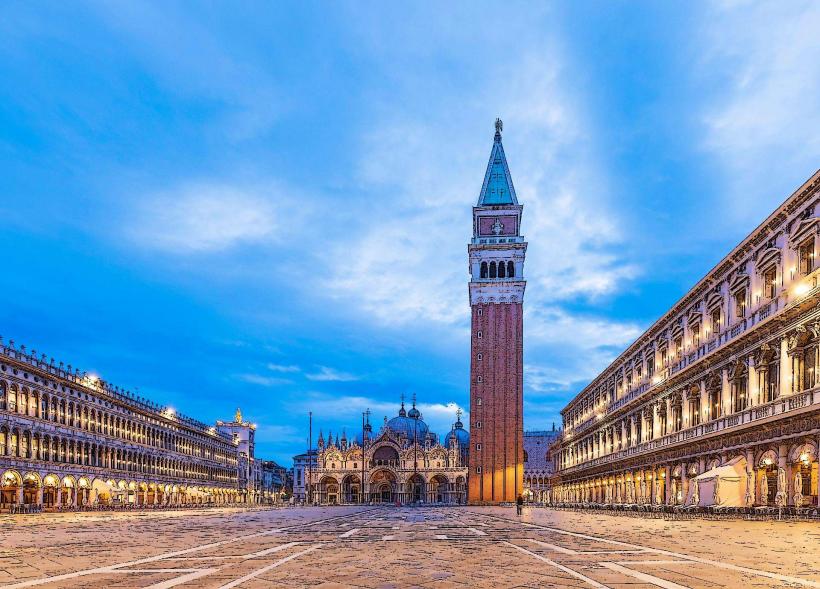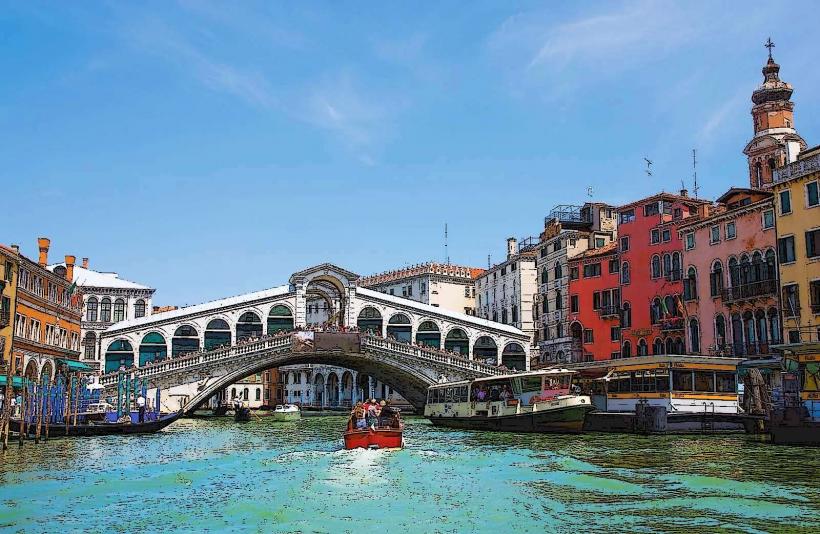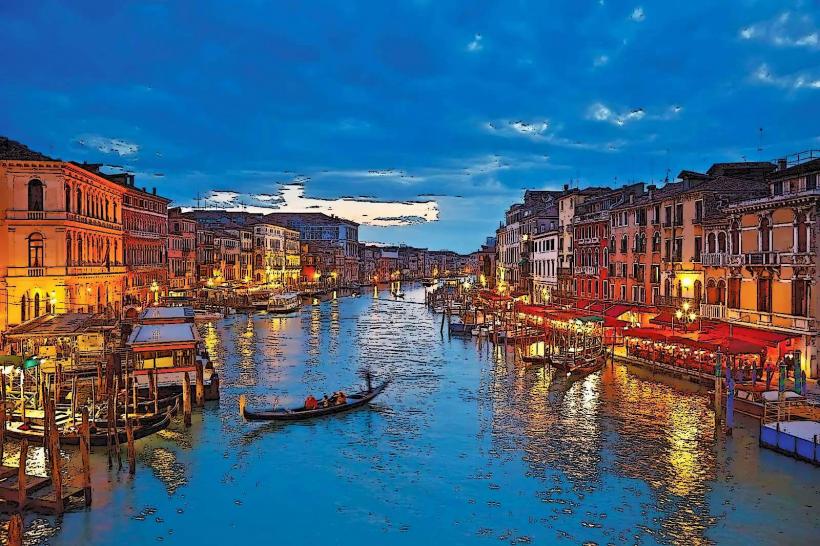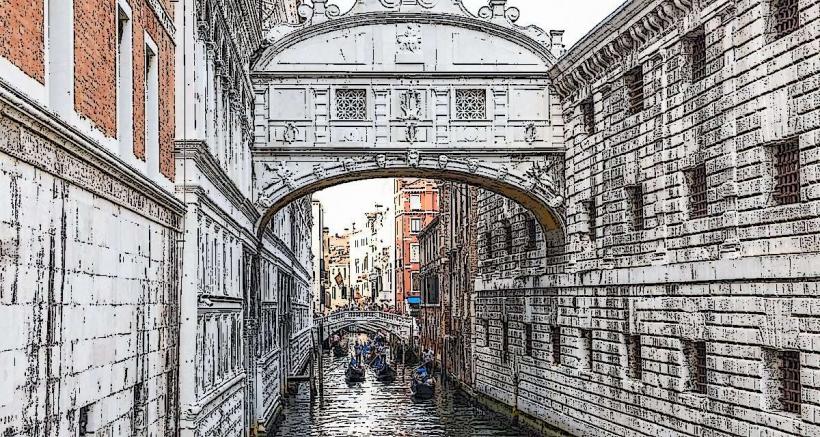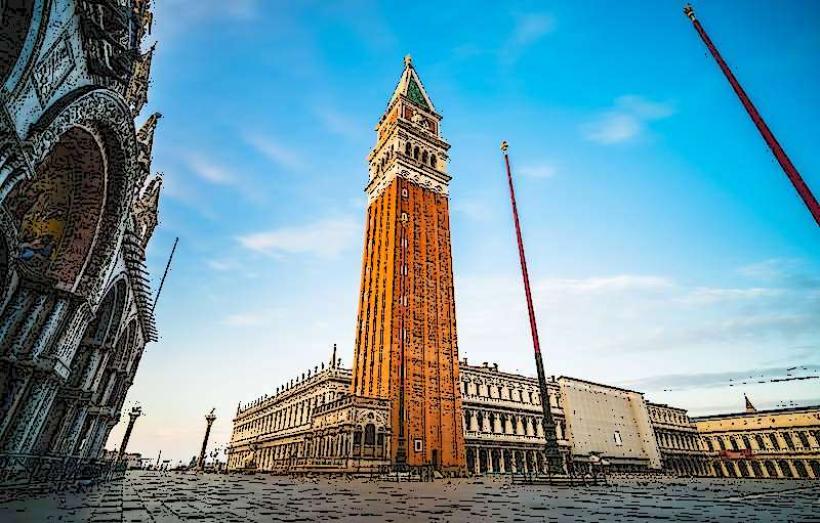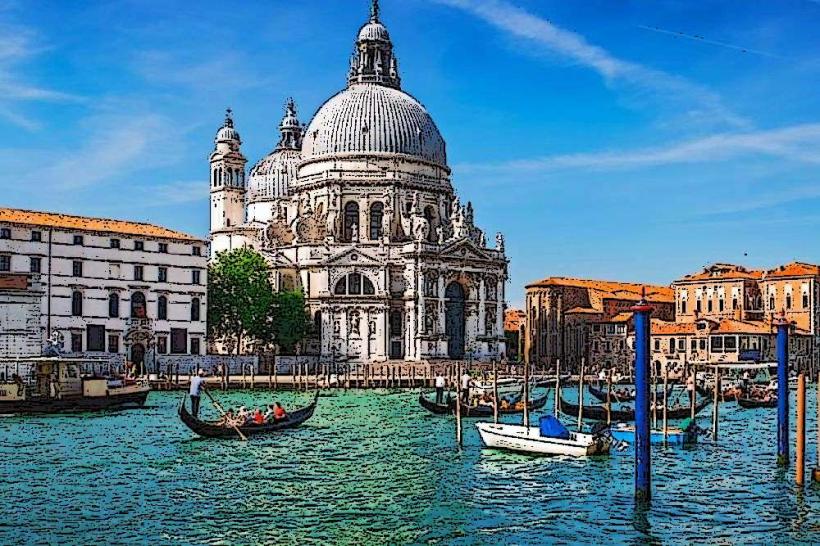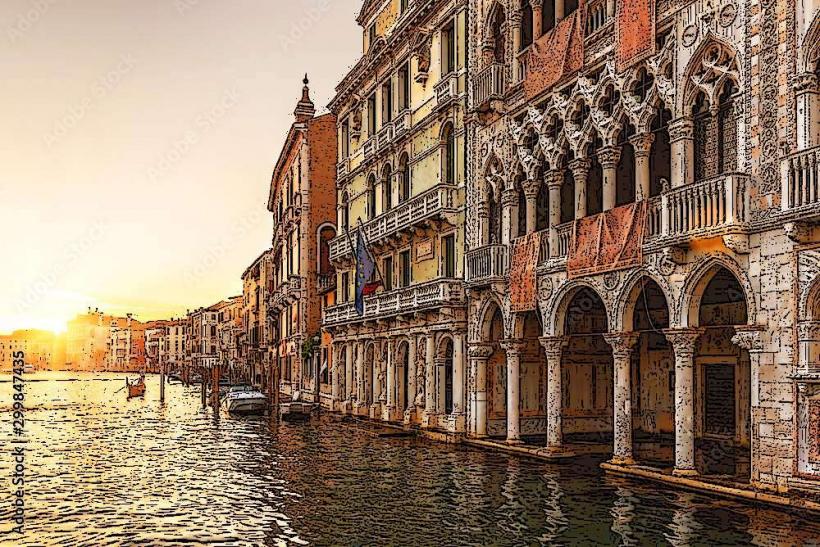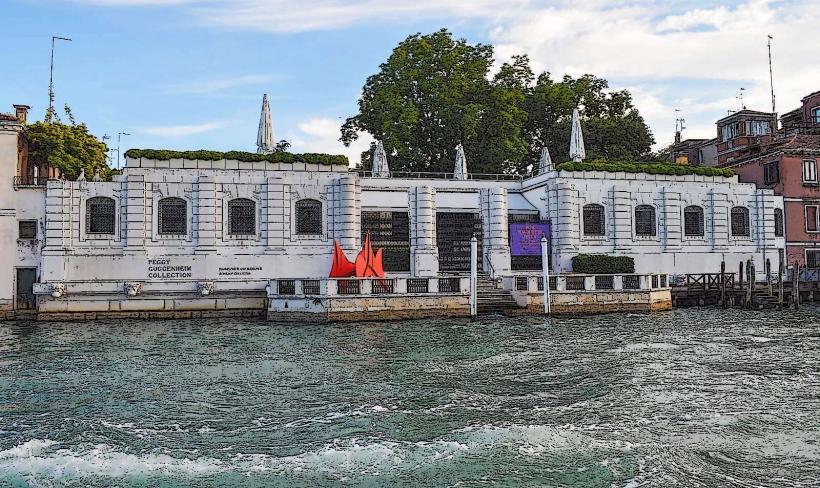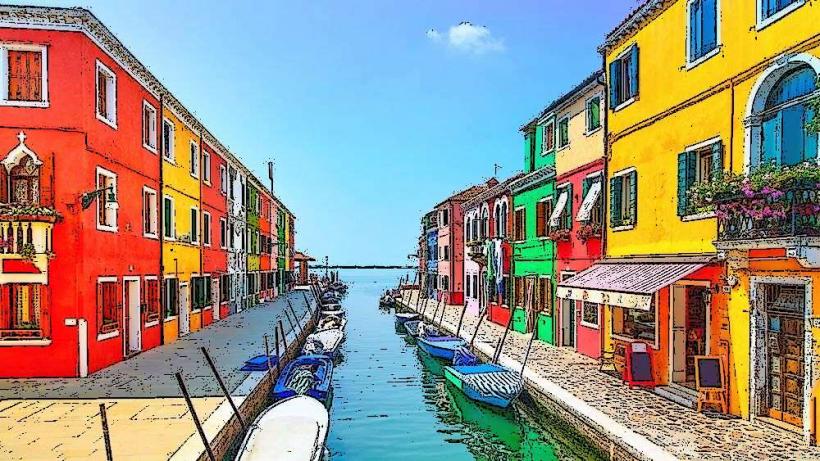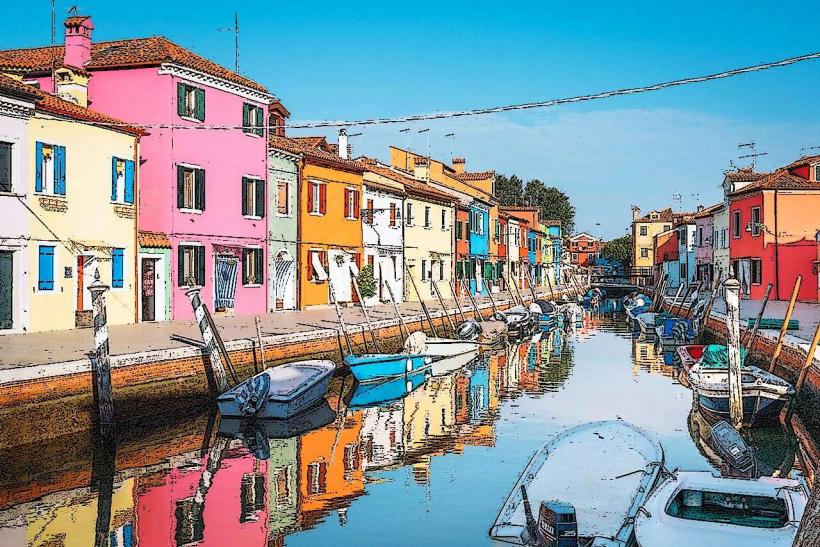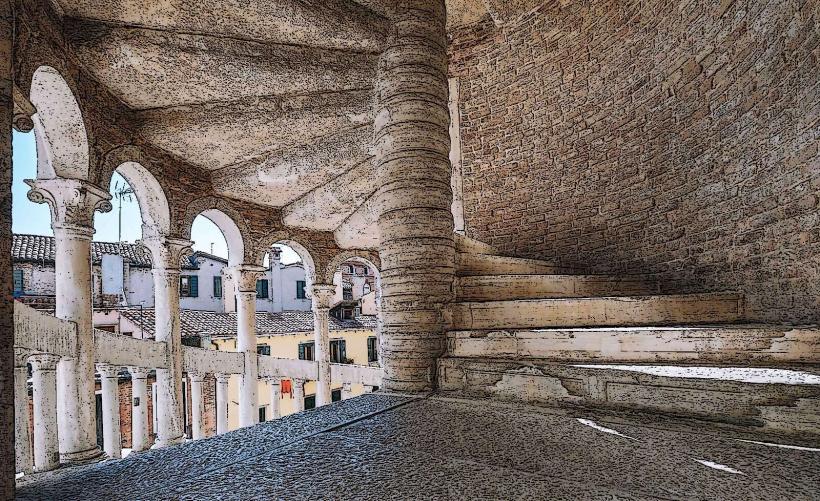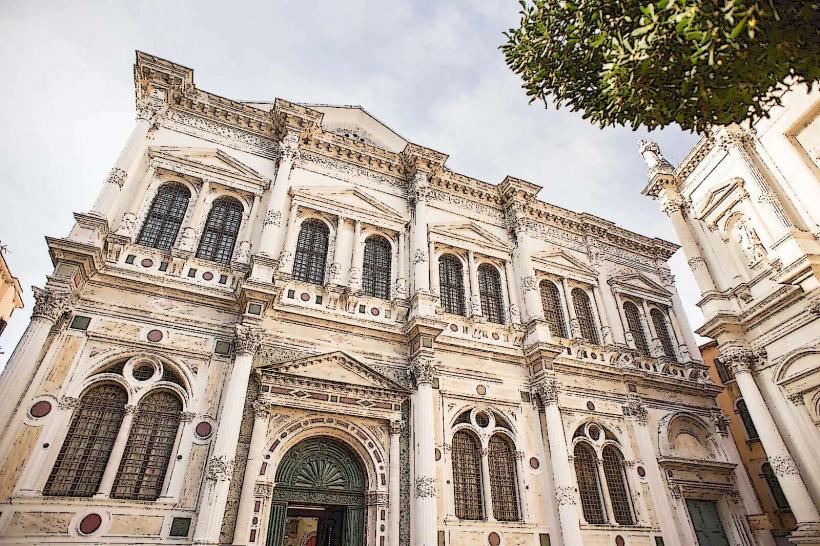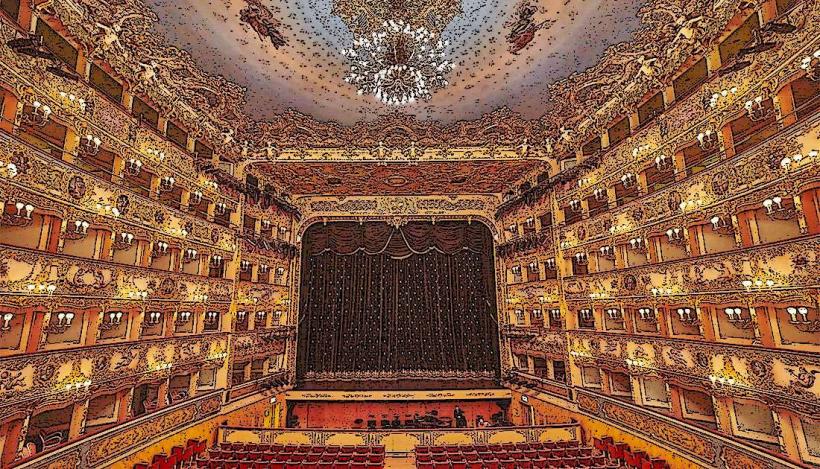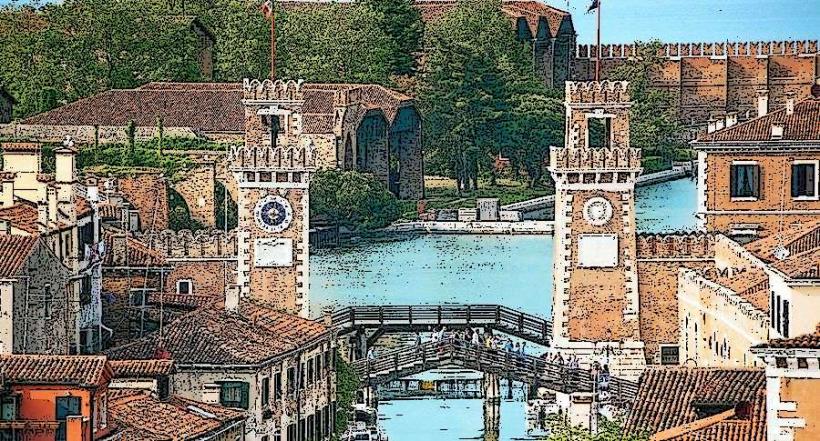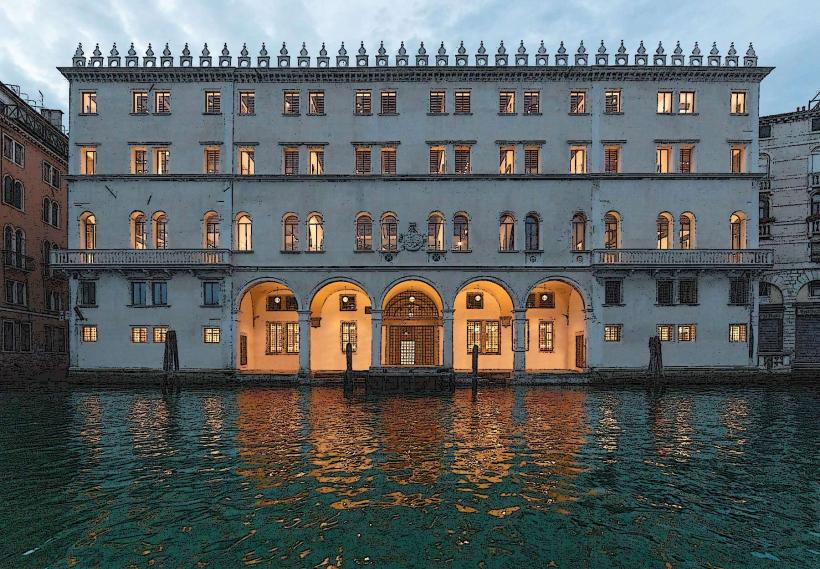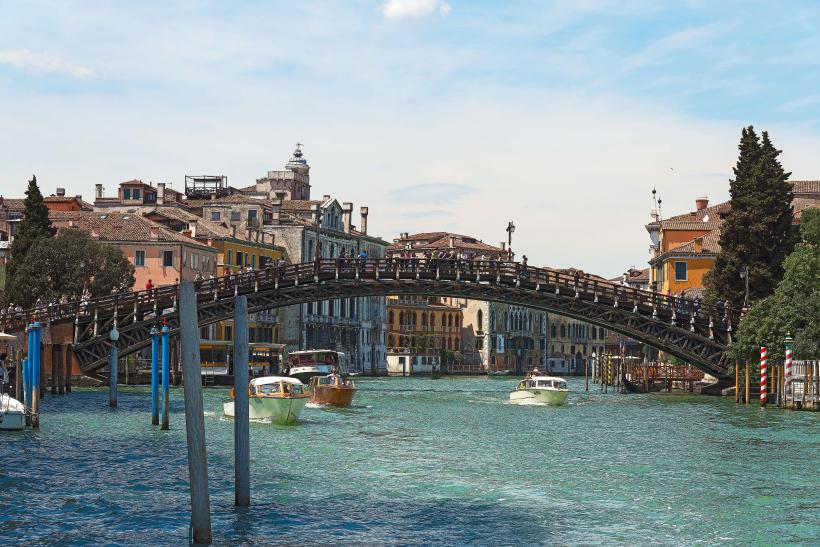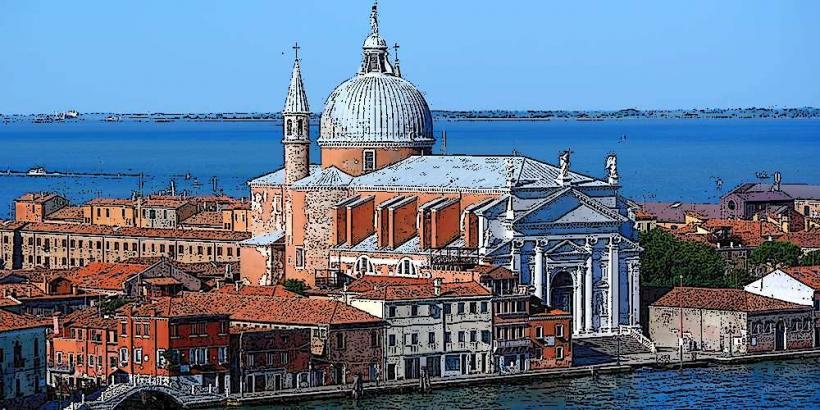Information
Landmark: Chiesa di San Giorgio MaggioreCity: Venice
Country: Italy
Continent: Europe
The Chiesa di San Giorgio Maggiore (Church of San Giorgio Maggiore) is a Renaissance-style church located on San Giorgio Maggiore Island, one of the smaller islands in the Venetian Lagoon. It is a significant landmark in Venice, known for its architectural beauty, serene location, and its role in Venetian religious and cultural life.
1. Historical Background
- Foundation and Early History: The original church on the site was founded in the 8th century by St. George of Venice, who was believed to have arrived in Venice as a missionary. However, the church was rebuilt and enlarged in the 16th century. The church’s modern appearance owes much to the reconstruction efforts led by Andrea Palladio, one of the most influential architects of the Renaissance.
- Palladio's Design: The church was designed by Andrea Palladio and construction began in 1565. Palladio’s work on the church is a prime example of Renaissance architecture, particularly his adaptation of classical elements. Palladio designed the church with a focus on symmetry, clarity, and proportion, making it one of the most admired works of the period.
2. Architectural Features
- Facade: The church’s facade is a masterpiece of Renaissance design, with clean, classical lines and large columns. The facade features Corinthian columns and pilasters that support a triangular pediment. It is a grand yet restrained design, which exemplifies Palladio’s focus on classical harmony.
- Interior: The interior of the church is equally remarkable. It features a single nave with side chapels, creating an atmosphere of spaciousness and light. The walls are adorned with fine artworks, and the church’s altarpiece, paintings, and frescoes add to its spiritual and aesthetic beauty.
- Palladian Influence: The design of the church reflects Palladio’s understanding of classical architecture. The central element of the church is a large dome that rises above the church’s nave, influenced by ancient Roman basilicas. The dome’s proportions are carefully designed to ensure a harmonious balance with the rest of the structure.
- Campanile: The church’s bell tower, known as the Campanile di San Giorgio Maggiore, stands out as one of the tallest structures in Venice. It offers a stunning view of the Venetian Lagoon and the Piazza San Marco (St. Mark’s Square). The campanile was built separately from the church and is an example of Renaissance engineering. The bell tower was designed with the same classical language, with rectangular forms and a pyramid-shaped spire at the top.
3. Art and Decoration
- Titian's Paintings: The church houses several significant works of art, including paintings by Titian, one of Venice's most famous artists. Among the notable pieces is the "Assumption of the Virgin" in the main altar. This masterpiece is an example of Titian’s ability to use color and light to create dramatic, spiritual scenes. It remains one of the highlights of the church.
- Frescoes and Altarpieces: The interior also features works by other Venetian artists, including Tintoretto and Veronese, contributing to the rich artistic heritage of the church.
- Marble Altars and Sculptures: The church's chapels and altars are adorned with finely crafted marble altars, while sculptures and reliefs throughout the church enhance its artistic and religious ambiance. These elements contribute to the sense of divine grandeur and beauty within the church.
4. Location and Views
- Island of San Giorgio Maggiore: The church is situated on San Giorgio Maggiore Island, which is located just across the water from Piazza San Marco. It can be reached by Vaporetto (water bus), offering a peaceful retreat away from the bustle of central Venice. The island is known for its peaceful atmosphere, beautiful views, and a number of other notable sites, including the San Giorgio Maggiore Monastery and gardens.
- View from the Campanile: The church's campanile offers one of the best panoramic views of Venice, with sweeping vistas of the Grand Canal, Piazza San Marco, and the surrounding islands. Visitors can climb to the top of the bell tower to enjoy these breathtaking views, which provide an excellent opportunity to capture the beauty of Venice from above.
5. Religious and Cultural Significance
- Role in Venetian Religion: Throughout its history, the Chiesa di San Giorgio Maggiore has served as an important site for religious services in Venice. It is especially significant for the Benedictine monks who once resided at the nearby monastery, and it continues to serve as a place for worship and prayer today.
- Cultural Events and Concerts: The church is also used for cultural events and concerts, particularly classical music performances. The acoustics in the church are excellent, making it a popular venue for chamber music and sacred music concerts. Many visitors come to the church not only to admire its architecture and art but also to experience its live music events, which add to the spiritual atmosphere.
- Venetian Heritage: The church is an essential part of Venice’s religious and artistic heritage. As a landmark of the Renaissance and a major work by Palladio, it contributes significantly to the cultural identity of Venice and is an integral part of the city's UNESCO World Heritage status.
6. Visiting the Chiesa di San Giorgio Maggiore
- Accessibility: The Chiesa di San Giorgio Maggiore is located just across the water from Piazza San Marco, and it can be reached by Vaporetto or private boat. The island also features a beautiful cloister and gardens, which can be explored along with the church.
- Hours and Entry: The church is open to visitors, and while admission is free for religious services, there may be a small fee for entering certain areas or for special events. It is advisable to check the opening hours and any special event schedules before visiting.
- Nearby Attractions: While on the island, visitors can also explore the San Giorgio Maggiore Monastery, walk through the cloisters, or enjoy the serene views of the city and lagoon from the island. The Giardini della Biennale (Biennale Gardens) are nearby, providing an additional cultural experience.
7. Conclusion
The Chiesa di San Giorgio Maggiore is a stunning example of Renaissance architecture, offering a unique blend of spiritual significance, artistic beauty, and historical depth. Designed by Andrea Palladio and housing masterpieces by artists like Titian, it is not only an important religious site but also a key cultural landmark in Venice. Whether you are admiring its classical design, exploring its artistic treasures, or enjoying its serene location with breathtaking views, the Chiesa di San Giorgio Maggiore is one of the must-visit sites in Venice.

